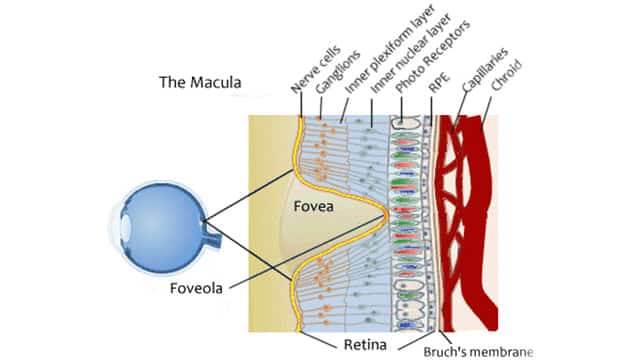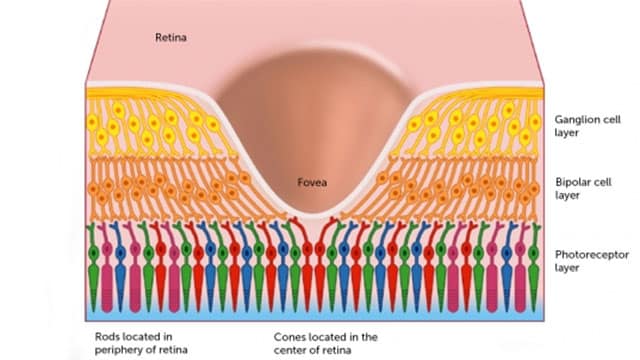Fovea
What does fovea mean?
In Latin, “fovea” translates to small pit, or depression.
The fovea is also called central fovea, or fovea centralis.
Where is the fovea located?

The fovea is a small depression in the center of the macula. It is located in the center of the posterior portion of the retina on the temporal side of the optic nerve.
The fovea is only about 0.35 mm in diameter and when focused on an object, the fovea, the cenral axis of the lens, and the object are all aligned.
What is the fovea?
The fovea is a highly specialized region of the retina. It is the spot of highest visual acuity in the eye and produces the sharpest vision and greatest color discrimination.
The resolution or sharpness in vision is because of the high concentration of cone cells in the fovea.

The fovea has the densest concentration of photoreceptor cells that are known as cones. Rods are completely absent from the fovea.
The ganglion and bipolar layers of the retina spread apart at the fovea to give light a direct path to the cones for the sharpest vision.
The cones are responsible for color vision and perception of fine detail.
They react to certain wavelengths of light and trigger nerve impulses that are carried through the optic nerve to the visual centers of the brain.
Why is the fovea important?
The fovea is repsonsible for sharp central vision that is necessary for humans to complete activities where detail is important, such as reading and driving.
The fovea is the most essential part of the retina for vision.
Protective measures for avoiding bright light and ultraviolet damage are crucial. If the delicate cones of the fovea are damaged, vision loss is significant.
Conditions that can affect the fovea include:
- Macular degeneration
- Stargardt Disease
- Macular edema
- Diabetic Retinopathy
